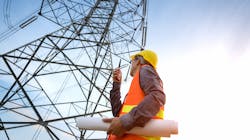My good friend Ron Carrington eloquently described the Three Cs of ASCE Committees in last year’s T&D World “ASCE Lines and Structures” supplement. They were commitment, compromise and consensus. He also made a statement that quickly caught my eye. “We tend to take the guidelines, codes, recommended practices, and standards used every day for granted.” Admittedly, I too have observed a sort of complacency creeping into our industry.
One of the many things I have truly loved about working in this industry over the span of the past 43 years is the understanding that what we all do is fundamentally important. We especially see that in the pride and respect given to everyone who helps “keep the lights on” no matter the conditions faced. It is an easy correlation to understand that every critical infrastructure system essential to minimizing societal and economic disruption and allowing modern society to efficiently function, including water, oil and natural gas, communications/IT, and transportation infrastructure systems, all depend on a reliable supply of electricity. It comes as no surprise then, that the critical electric power infrastructure that we design, fabricate, construct and maintain, particularly the portion of the “grid” composed of overhead transmission, distribution, substation, and the system control infrastructure, becomes a hot topic when the public perceives parts of this electric power infrastructure might fail to reliably perform its function. We only must view the public response to the chaos created in Puerto Rico or watch as the events in California sort themselves out to realize this. Even the recent localized power outage in New York became a “national” story of concern about our power grid.
It may seem odd that much of the knowledge currently used to specify, design, fabricate, construct and maintain our electric power infrastructure has been learned by experiencing or monitoring trends leading to failure. We engineers are weird in that way. We become challenged by studying failures in our systems. Of course, it is always better from a career advancement standpoint to learn from someone else’s failure than our own, but all joking aside, that is how we continuously improve ourselves and our profession — we continue to learn. As an industry, we don’t talk about failures as much as we used to. There is a high risk to that: complacency.
One of the great benefits of active participation in ASCE/SEI committees is that participation brings a much clearer understanding of the broader picture of things going on in our industry. Active participation allows one to hear the “intent” behind the various requirement or recommendation statements being discussed in the ASCE/SEI Standards, Manuals of Practice, or Guides. As engineers, we should be just as interested in the “intent” behind the requirement or recommendation, as much as being able to just read and implement them. That’s what makes us engineers. Over the next 12 to 18 months, almost all the existing ASCE/SEI ETS committees will enter new cycles of update activity. This is a great time to think about volunteering your time, enthusiasm, and experience to add to the body of knowledge we all depend on.
A new update to ASCE-48, the Steel Pole Standard has been publicly balloted and should soon be published. ASCE 10, the Tower Standard is close to the finish line. Several ASCE Manuals of Practice (MoP) Committees have also just wrapped up, or have nearly wrapped up, and a new update cycle Committee will need to be formed for those important documents:
- ASCE/SEI MoP #74 “Guidelines for Electrical Transmission Line Structural Loadings” (this excitingly relevant update will also include a draft “pre-standard” for consideration to begin elevating this to a Standard in the next update cycle)
- ASCE/SEI MoP #113 “Substation Structure Design Guide
- ASCE/SEI MoP #141 “Wood Pole Structures for Electrical Transmission Lines” (New)
- ASCE/SEI MoP #104 “Recommended Practice for Fiber-Reinforced Polymer Products for overhead Utility Line Structures”
Several new ASCE/SEI committees are also being considered to address unmet needs in foundation design, and potentially a task committee to formally attempt to define our industry’s view of “resiliency,” at least for overhead lines. Several older publications such as MoP #123 “Prestressed Concrete Transmission Pole Structures” and MoP #91 “Design of Guyed Electrical Transmission Structures” are available to be updated as well.
As can be clearly seen, there will NOT be an absence of opportunity to help improve our industry through the development of these standards, manuals of practice, and guides. It only takes commitment, compromise, and consensus, to avoid the fourth “C” — Complacency. It will be an honor to work with all of you who unselfishly provide the energy, enthusiasm, and expertise to ensure we do not become complacent in our combined efforts to continuously improve our industry and profession.
About the Author
Wesley J. Oliphant
Wesley J. Oliphant, P.E., is a principal and chief technical officer, Exo Group, LLC. He is a life member and fellow of ASCE and SEI, a member of IEEE, and the current chair of ASCE’s Committee of Electrical Transmission Structures.
